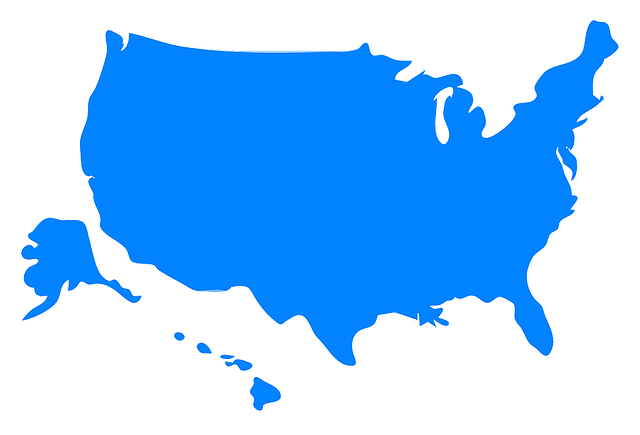How is Job Growth measured?
Job growth is typically measured by the percentage increase in employment opportunities within a specific region over a set period. Government agencies, research institutions, and economic analysts often collect and analyze this data to track the health of job markets.
Metrics Used
Various metrics define job growth, including employment rates, new job openings, and wage compensation. Employment rates indicate the percentage of the population that is currently employed, while new job openings reflect the number of available positions in the market.
Additionally, wage compensation measures the average pay and benefits offered to employees, providing insight into the overall health of the job market and economy. Together, these metrics help paint a comprehensive picture of job growth and its impact on the workforce.
Bureau of Labor Statistics Data
The Bureau of Labor Statistics (BLS) is crucial in providing timely and accurate data on job growth. Through surveys and research, they generate comprehensive reports that offer insights into employment trends across different sectors. This data helps policymakers, businesses, and individuals make informed decisions regarding workforce planning and economic strategies.
Impact on Economy
Job growth directly influences the overall economy by boosting consumer spending, reducing unemployment rates, and driving innovation. As more people find employment opportunities, disposable income levels increase, leading to higher demand for goods and services. This cycle of increased production and consumption contributes to economic expansion and stability.
What are the Best States for Job Growth?
Based on the latest data on nonfarm employment from the Bureau of Labor Statistics, these ten states have the best job growth.
1. Nevada
Nevada experienced significant job growth in 2023, with the unemployment rate dropping to 4.2% compared to the national average of 4.6%. Industries such as leisure and hospitality, construction, and healthcare saw notable increases in employment opportunities, contributing to the state’s overall economic expansion. Additionally, Nevada’s job growth was fueled by a surge in tourism and a booming real estate market, making it a promising state for those seeking employment opportunities.
2. Colorado
Colorado’s job growth rates in 2023 have been impressive, with the state adding over 50,000 new jobs across various industries. The unemployment rate has also seen a significant decrease, dropping to just 3.5% as more people find employment opportunities in Colorado.
3. Florida
Florida’s job growth rate has steadily increased over the past few years, reaching 2.4% in 2019. The state added over 206,000 jobs in various sectors, including healthcare, tourism, and construction, contributing to its strong economic performance. The unemployment rate in Florida has also been declining, reaching a low of 3.2% in 2019.
4. Utah
In 2023, Utah experienced significant job growth, adding over 50,000 new jobs across various industries. The unemployment rate in Utah dropped to a record low of 2.5%, showcasing the robust economic growth and opportunities available in the state.
5. Texas
Job growth in Texas has been robust in 2022-2023, with the state adding over 300,000 new jobs during this period. Industries such as technology, healthcare, and energy have significantly contributed to this growth, creating opportunities for job seekers across various sectors. Texas’s strong economic performance has positioned it as a top destination for job seekers looking for diverse and expanding employment opportunities.
6. Idaho
In 2022-2023, Idaho experienced significant job growth across various industries, with an increase of over 3% in employment rates. This growth was driven by technology, healthcare, and manufacturing sectors, creating new opportunities for job seekers in the state. The steady expansion of the economy in Idaho has contributed to a positive outlook for continued job growth in the coming years.
7. New Jersey
Job growth in New Jersey in 2023 has been significant, with industries like healthcare, technology, and finance driving the expansion. According to data from the Bureau of Labor Statistics, New Jersey added over 50,000 jobs in these sectors alone, contributing to the state’s overall economic growth.
8. Arizona
In 2023, Arizona experienced significant job growth, with various industries expanding their workforce. According to data from the Bureau of Labor Statistics, Arizona added over 50,000 new jobs in the healthcare, technology, and construction sectors, contributing to the state’s growing economy. This growth reflects Arizona’s status as a hub for innovation and development in the Southwest region.
9. Washington
Job growth in Washington is expected to remain strong in 2024, with industries like technology, healthcare, and clean energy driving employment opportunities. According to recent data, the state’s job market is projected to expand by 2.5% over the next year, creating thousands of new jobs for residents. Investments in innovation and infrastructure fuel this growth, positioning Washington as a hub for job creation and economic development.
10. Montana
In 2023, Montana experienced significant job growth across various industries, with an overall increase of 3.5%. This growth trend is expected to continue into 2024, driven by healthcare, technology, and tourism sectors. Montana is poised to see continued job creation and economic expansion in the coming year with a strong economy and favorable business environment.
What are the worst States for Job Growth?
These ten states are considered at the lower end of job growth rates.
41. West Virginia
Despite efforts to diversify its economy, West Virginia continues to struggle with job growth due to its reliance on declining industries such as coal mining. The state’s population decline and lack of skilled workforce also contribute to its low job growth rates.
42. New York
New York’s high cost of living and business regulations have hindered job growth in the state. The heavy concentration of industries like finance and technology in certain areas leaves other regions struggling to create new job opportunities.
43. Connecticut
Connecticut’s slow job growth can be attributed to its high taxes and expensive housing market, which make it less attractive for businesses to expand or relocate. The state’s proximity to major metropolitan areas like New York City also leads to competition for talent and resources.
44. Illinois
Illinois faces challenges in job growth due to its budget issues, high debt levels, and political instability. Businesses hesitate to invest in the state, leading to sluggish job creation and economic growth.
45. Mississippi
Mississippi’s job growth is limited by factors such as low educational attainment, poverty rates, and lack of infrastructure development. The state’s reliance on agriculture and manufacturing industries also contributes to its slow job growth rates.
46. New Mexico
New Mexico struggles with job growth due to its dependence on federal funding, limited access to capital for businesses, and lack of skilled workforce. These factors have hampered the state’s economic development efforts, resulting in below-average job growth rates.
47. Louisiana
Louisiana’s vulnerability to natural disasters, reliance on oil and gas industries, and issues with corruption and political instability hinder its job growth. These factors create uncertainty for businesses looking to invest in the state, impacting job creation.
48. Wyoming
Wyoming’s job growth is impacted by its reliance on the energy sector, which is subject to market fluctuations and environmental concerns. The state’s small population and rural nature also limit job opportunities in other industries, leading to slow overall job growth rates.
49. Kansas
Kansas struggles with job growth due to factors such as a lack of skilled workforce, limited access to capital for small businesses, and an overreliance on traditional industries like agriculture. The state’s education system may not adequately prepare students for the modern job market, leading to a mismatch between the skills employers need and those available in the workforce.
50. Oklahoma
Oklahoma’s job growth rates are at the bottom of the list due to a combination of factors, including a decline in the energy sector, slow population growth, and limited industry diversification. The state’s heavy reliance on oil and gas industries has made it particularly vulnerable to fluctuations in commodity prices, leading to stagnant job growth compared to other states.
Complete List
Here’s the ranking for all 50 states.
- Nevada
- Colorado
- Florida
- Utah
- Texas
- Idaho
- New Jersey
- Arizona
- Washington
- Montana
- North Dakota
- South Carolina
- North Carolina
- Hawaii
- Michigan
- Virginia
- Georgia
- Delaware
- California
- Alaska
- Rhode Island
- Vermont
- Tennessee
- Oregon
- Massachusetts
- Indiana
- Alabama
- Pennsylvania
- Ohio
- Arkansas
- South Dakota
- Missouri
- Iowa
- Wisconsin
- Maine
- New Hampshire
- Kentucky
- Maryland
- Nebraska
- Minnesota
- West Virginia
- New York
- Connecticut
- Illinois
- Mississippi
- New Mexico
- Louisiana
- Wyoming
- Kansas
- Oklahoma
What are the Best States for starting a New Business?
There is a direct correlation between job growth and starting a new business. A high job growth rate typically indicates the state’s economy is healthy, with increased consumer spending power, creating a favorable environment for new companies to flourish.
Starting a new business is exciting, especially when considering the best states for optimal growth opportunities. States like Texas, Florida, and California are known for their vibrant economies and diverse industries, offering ample opportunities for new businesses to thrive.
While starting a business in a state with high job growth may seem advantageous due to increased demand for goods and services, launching a startup in a state with lower job growth can also present unique opportunities. Lower competition levels and potential government incentives can make it easier for new businesses to establish themselves in such environments.
Frequently Asked Questions
Here are the most common questions about the best states for job growth.
What State has the most Job Openings?
California boasts the highest number of job openings in the United States, with over 1.4 million available positions. The state’s diverse economy contributes to this high number, offering opportunities across various sectors.
The most in-demand industries in California include technology, healthcare, education, and professional services. These sectors consistently provide a significant number of job opportunities for individuals with varying levels of education.
Texas follows closely behind California in terms of total job openings, particularly excelling in industries such as energy, aerospace, and manufacturing. The state’s business-friendly environment and robust job market make it an attractive destination for job seekers.
What State has the fastest Job Growth?
Utah stands out as the state with the fastest job growth in recent years. The state’s job market has been booming, with a significant increase in employment opportunities across various sectors.
One key factor contributing to Utah’s rapid job growth is its diverse economy. The state has a healthy mix of industries, including technology, healthcare, finance, and outdoor recreation. This diversification helps create a stable job market that continues to expand.
Moreover, Utah’s business-friendly environment is crucial in attracting companies and promoting job growth. The state offers tax incentives, streamlined regulations, and support for entrepreneurship, making it an attractive destination for businesses looking to expand.
Utah’s skilled workforce contributes to its thriving job market. The state prioritizes education and training programs that equip workers with the skills needed to meet the demands of a rapidly evolving economy.
What Cities have the Best Job Growth?
The top 10 cities in the United States with the best job growth are:
- Austin, Texas
- Denver, Colorado
- Seattle, Washington
- Orlando, Florida
- Nashville, Tennessee
- Charlotte, North Carolina
- Atlanta, Georgia
- San Francisco, California
- Dallas, Texas
- Phoenix, Arizona
These cities have experienced significant economic development and a surge in employment opportunities. Austin stands out for its rapidly expanding tech sector, while Denver’s diverse economy fuels job creation across various industries. Seattle’s booming tech scene and major companies like Amazon drive job growth in the region.
Orlando’s tourism industry contributes to its job market strength, attracting visitors worldwide. Nashville’s vibrant music and healthcare sectors offer diverse employment prospects. Charlotte’s financial services industry and growing technology sector boost job opportunities for residents.
Atlanta is a hub for transportation and logistics companies, fostering job growth in these sectors. San Francisco’s innovation-driven economy and concentration of tech giants lead to robust employment growth. Dallas benefits from a diverse economy spanning finance, technology, and healthcare.
Lastly, Phoenix experiences steady job growth fueled by its robust business environment and population influx. These cities showcase dynamic economies that continue to attract job seekers from various backgrounds.
Should I start a Business in a State with High Job Growth?
Starting a business in a state with high job growth can benefit your entrepreneurial journey. Small business owners in these states can benefit from a skilled workforce, access to capital, and supportive business networks. The high job growth in these states indicates a strong economy and consumer demand, which can positively impact new businesses.
However, it’s essential to consider factors like cost of living, competition, and industry trends before deciding where to start your business. High employment demand can drive up wages and salaries. In addition, states with lower job growth may present unique opportunities for economic expansion.
When choosing a state for your business, consider aspects such as quality of life, infrastructure, access to resources, and potential challenges. Researching each state’s economic indicators and growth projections can help you make an informed decision about where to establish your business.
Pros & Cons of Starting a Business in a State with High Job Growth
Pros:
- Access to a larger labor force.
- Increased demand for goods and services due to a growing population.
- Potential for higher revenue and profit due to economic growth.
- Opportunity to network with other successful businesses in the area.
Cons:
- Higher competition from other businesses attracted to the area.
- Cost of living may be higher, leading to increased expenses for the business.
- Potential for rapid changes in the market due to the fast-paced growth.
- Difficulty in finding suitable commercial space due to high demand.
Best Stats for Job Growth – Final Thoughts
Whether you’re looking to advance your career or embark on an entrepreneurial journey, understanding the best states for job growth will be valuable in shaping your future endeavors. Keep exploring trends, seeking expert advice, and leveraging resources to support your aspirations.
Contact us if you have more questions about the best states for job growth or to apply for a small business loan. Our alternative funding experts can help you find the best financing options for your business goals.



















